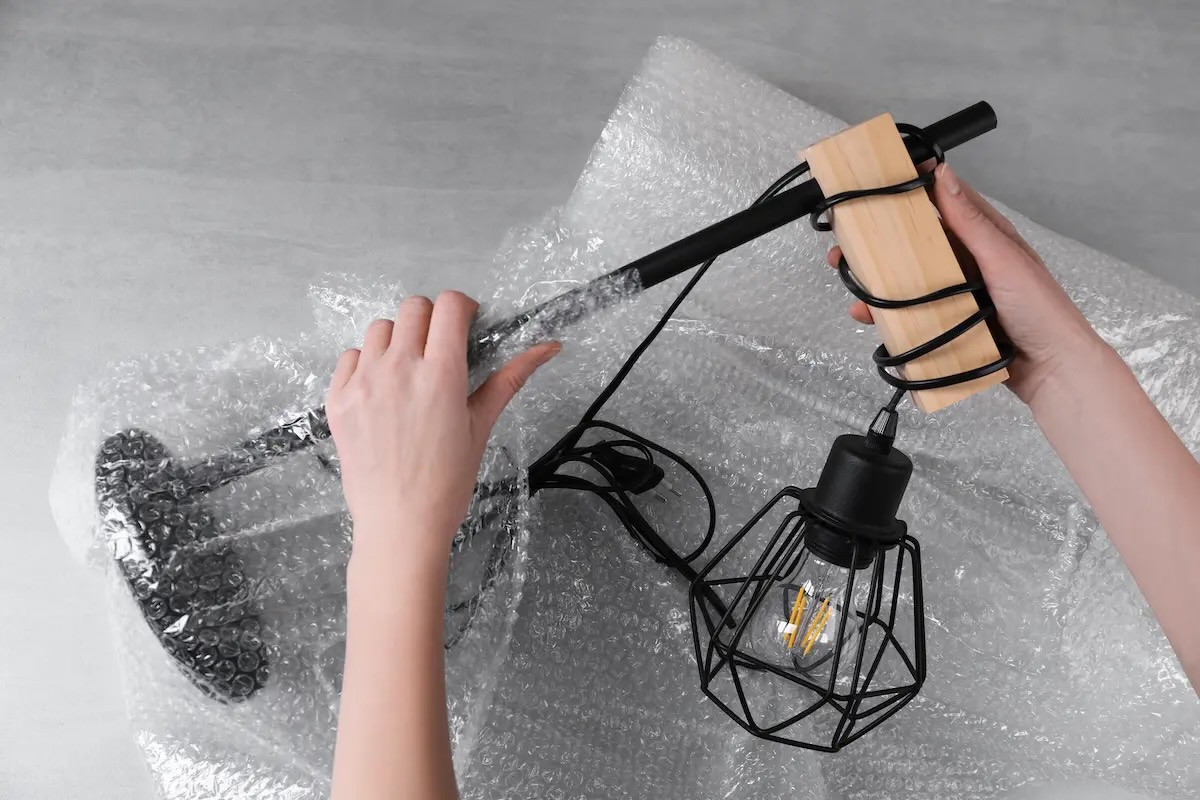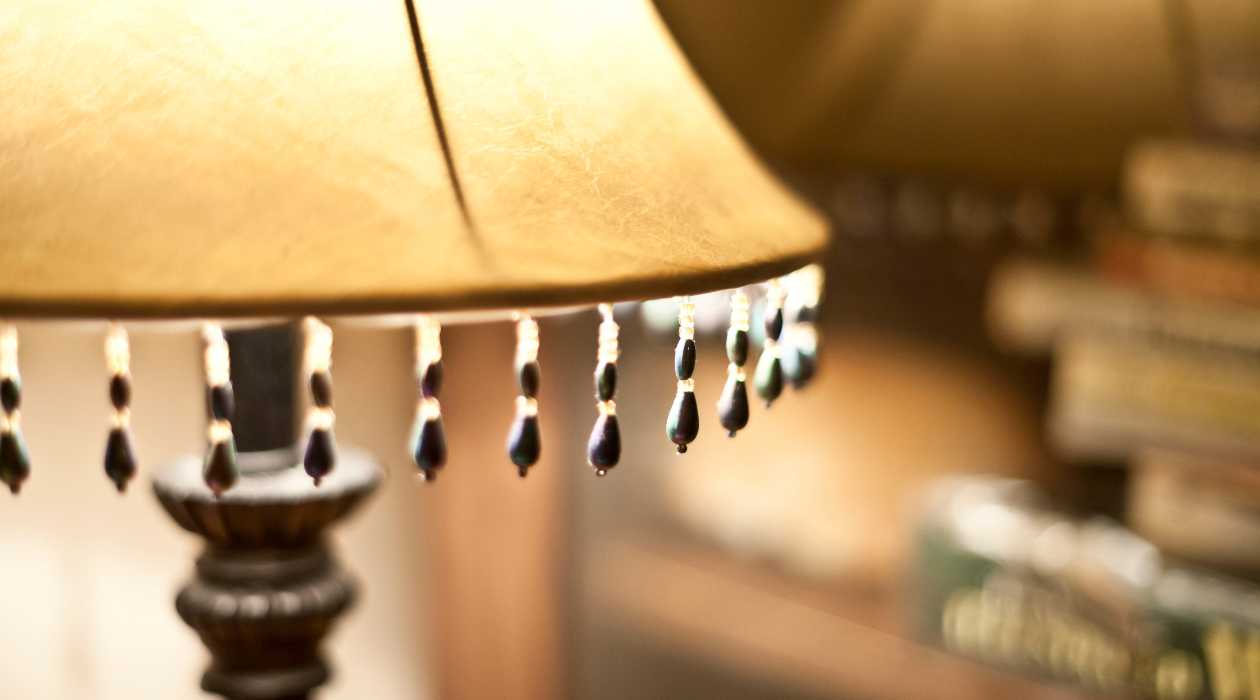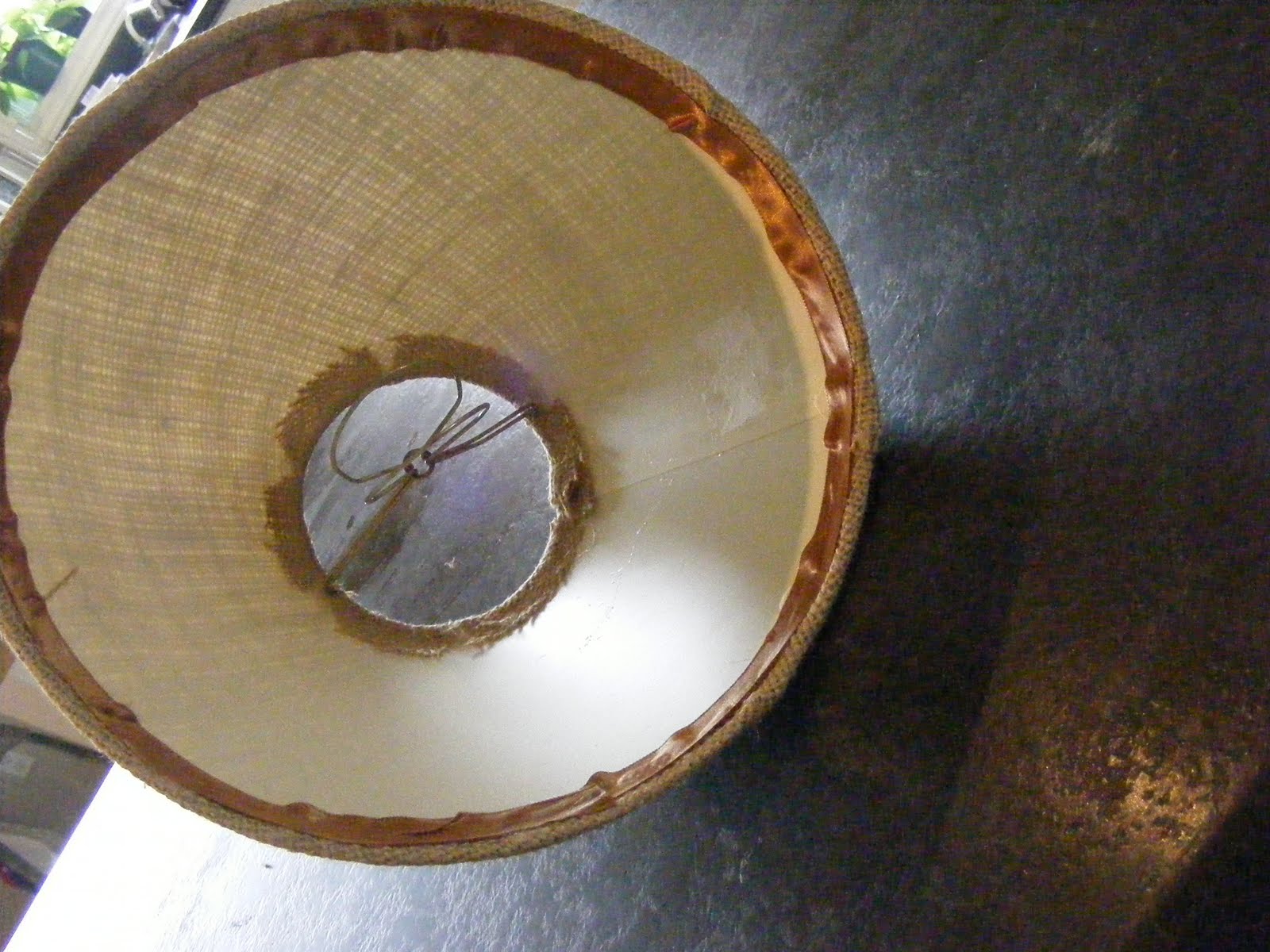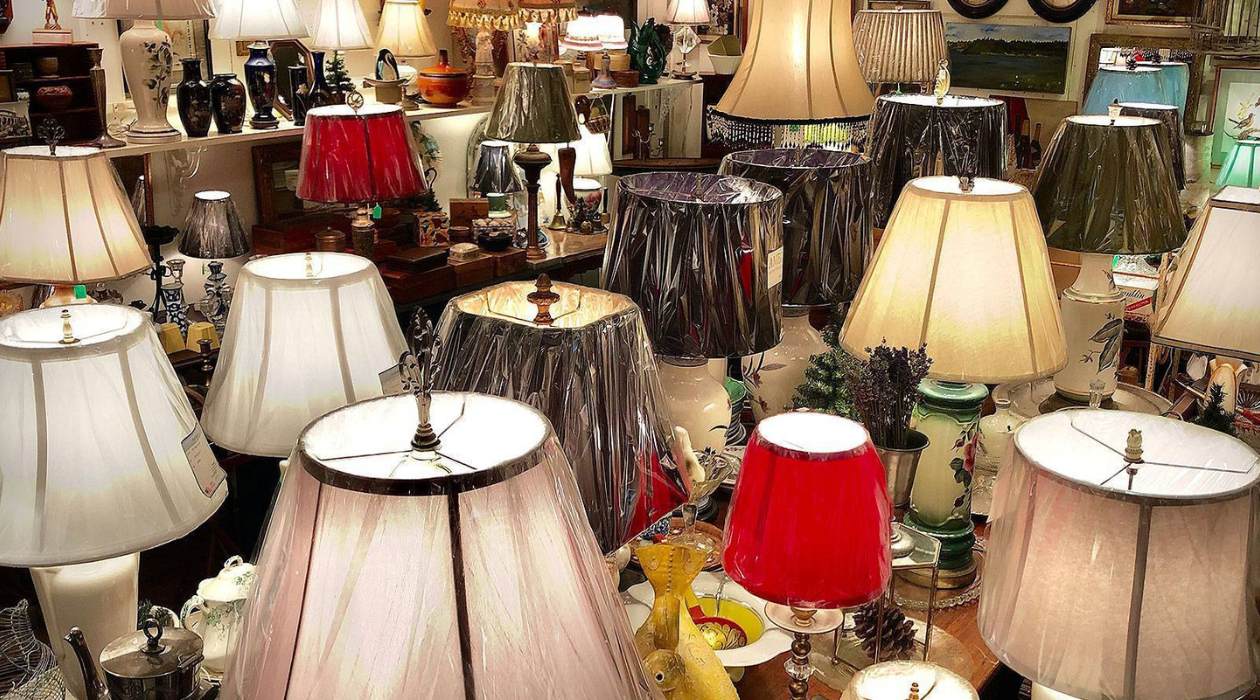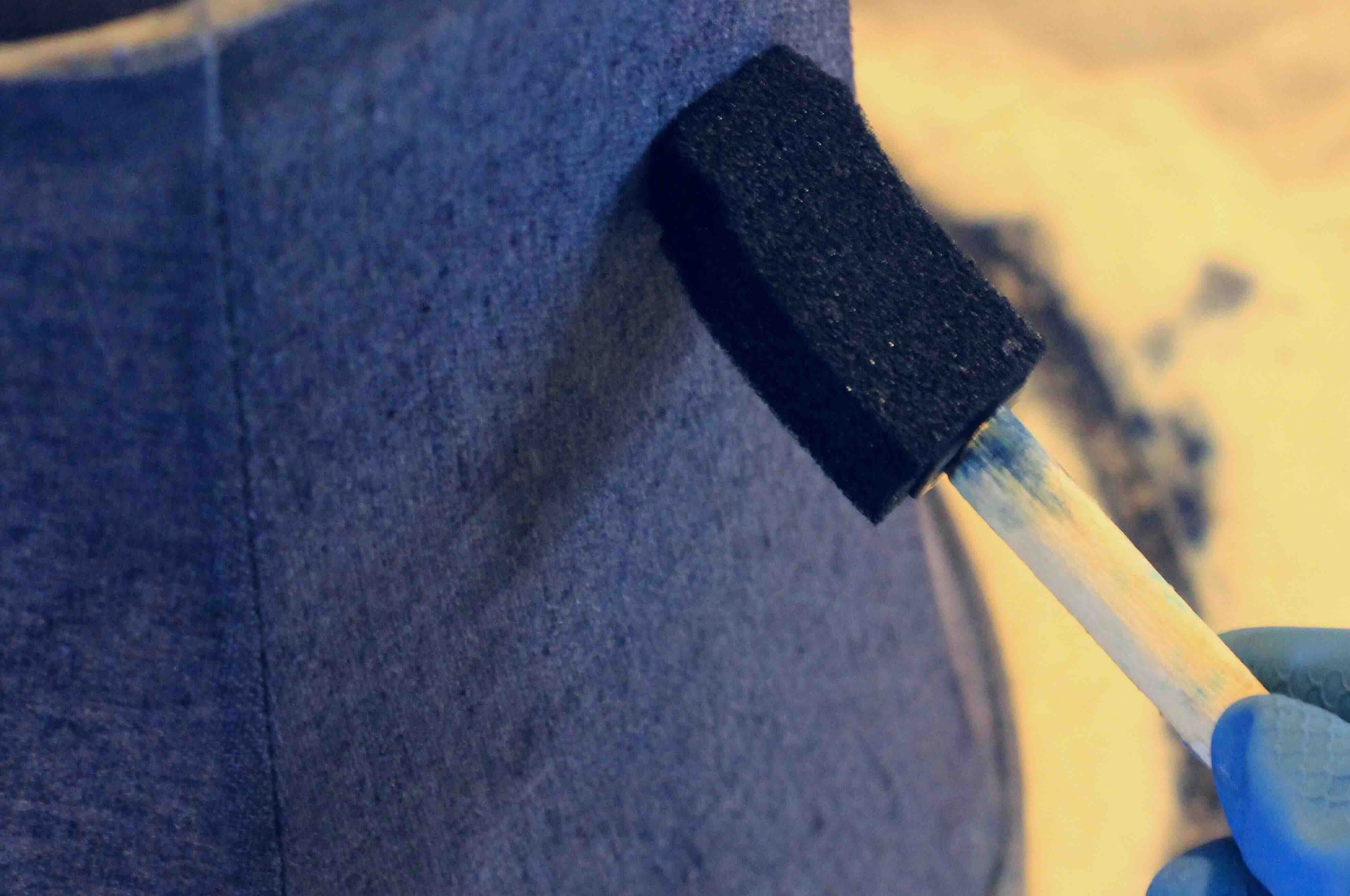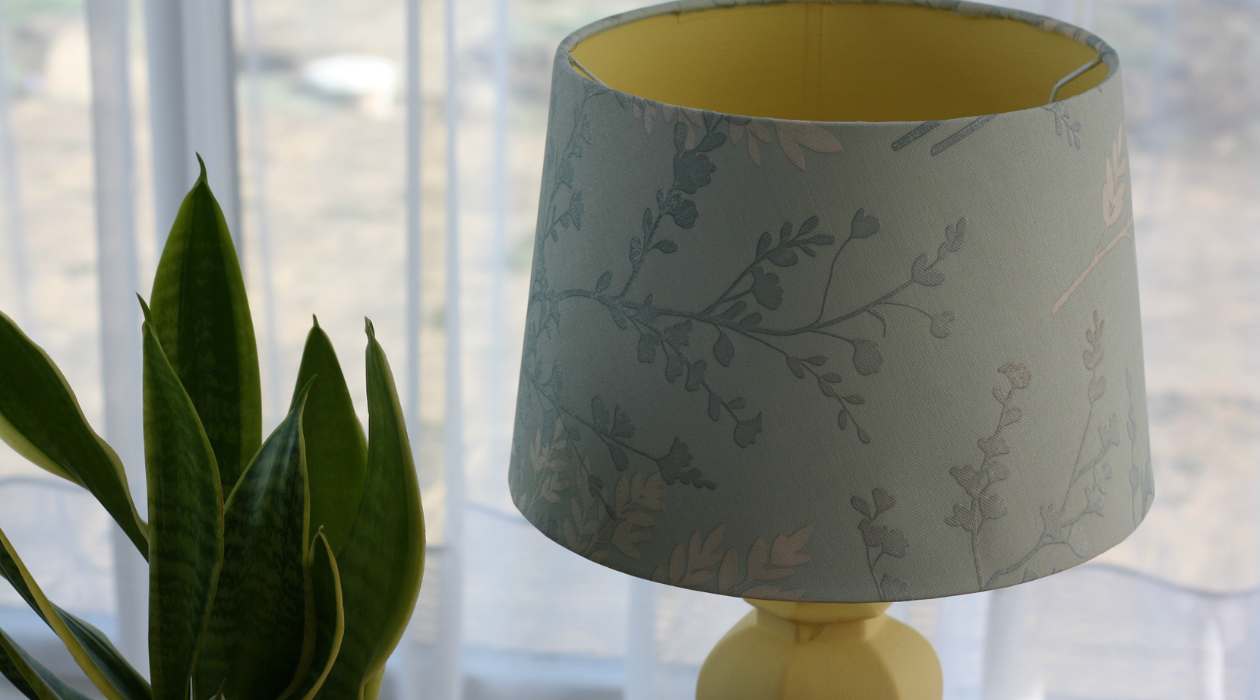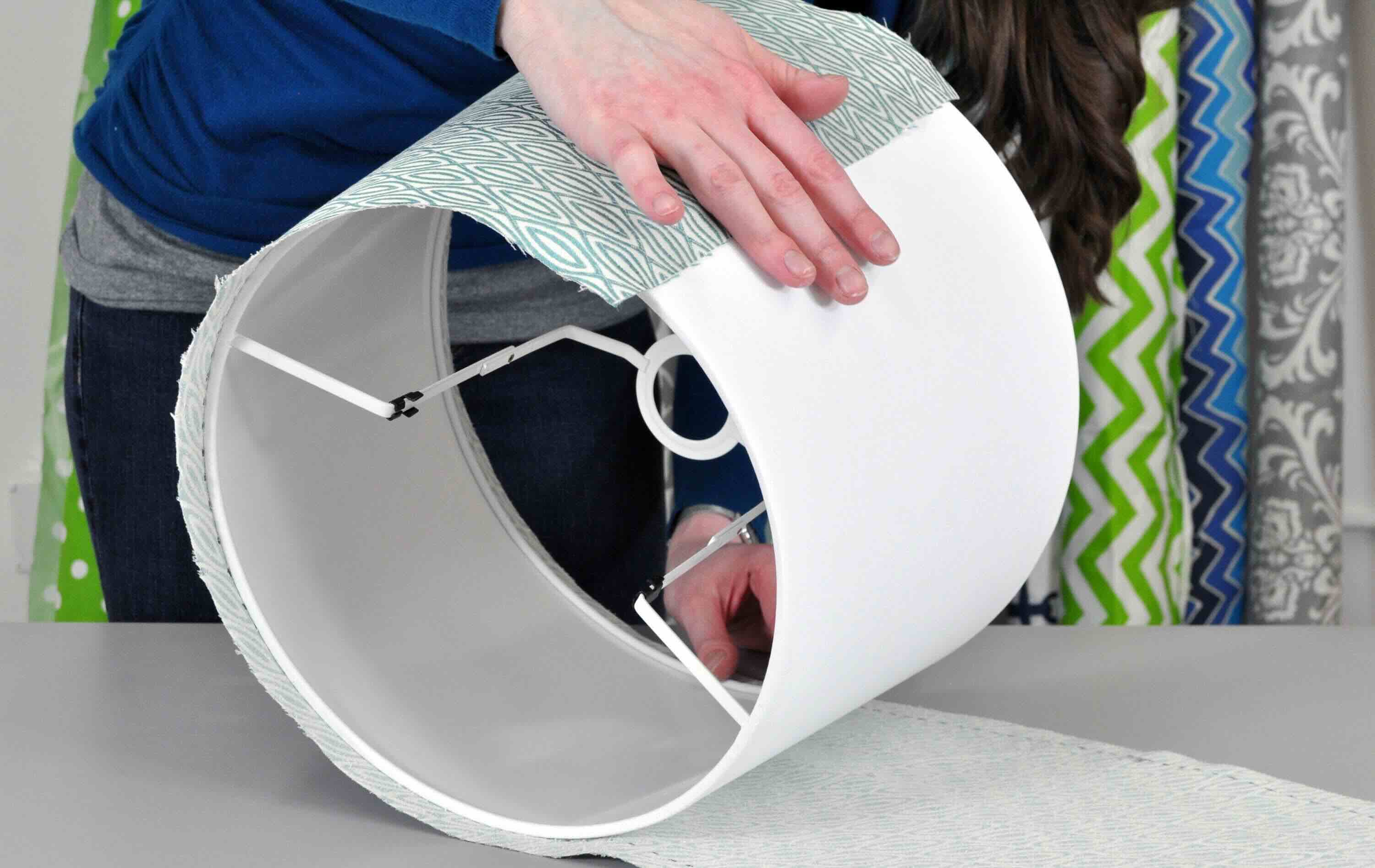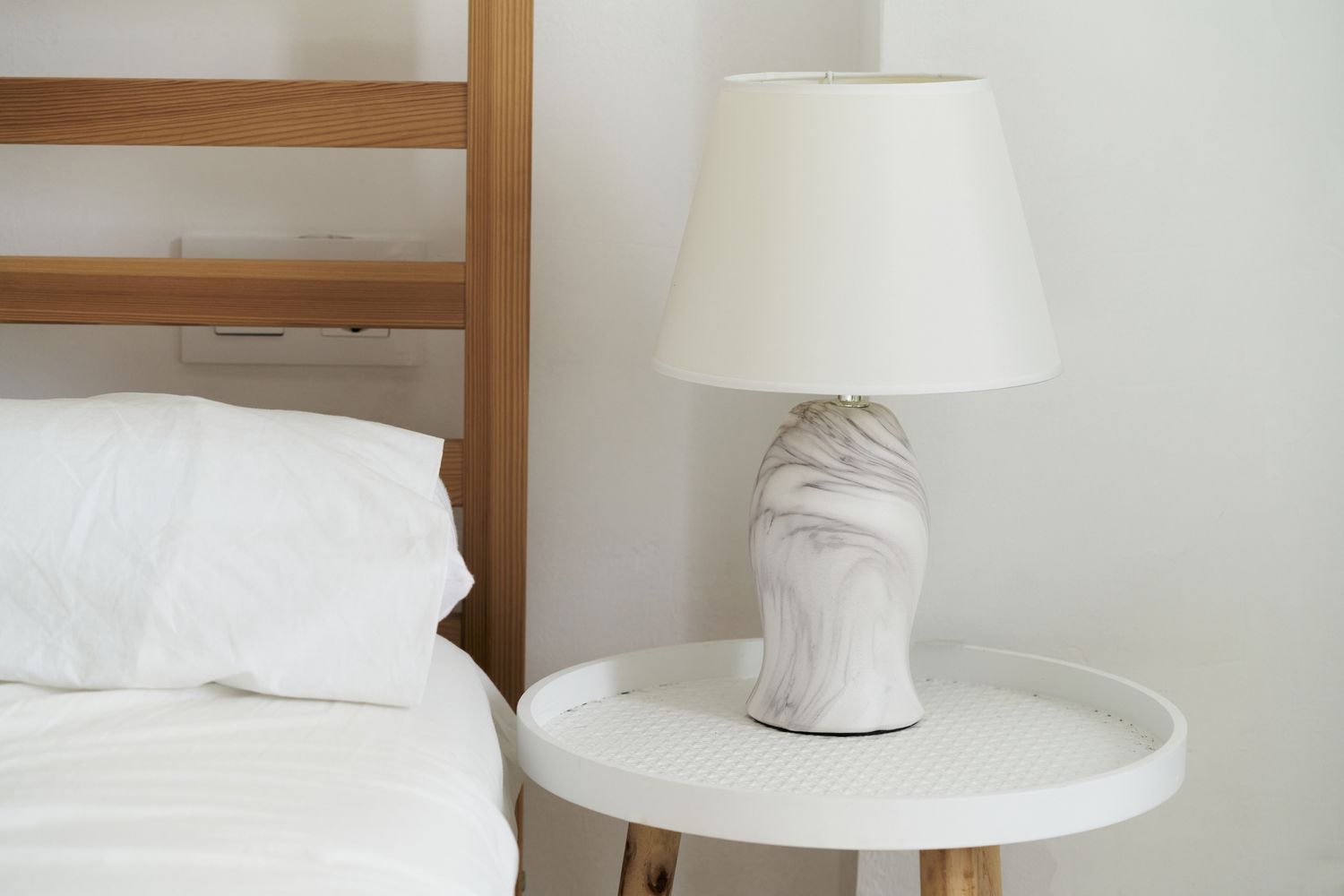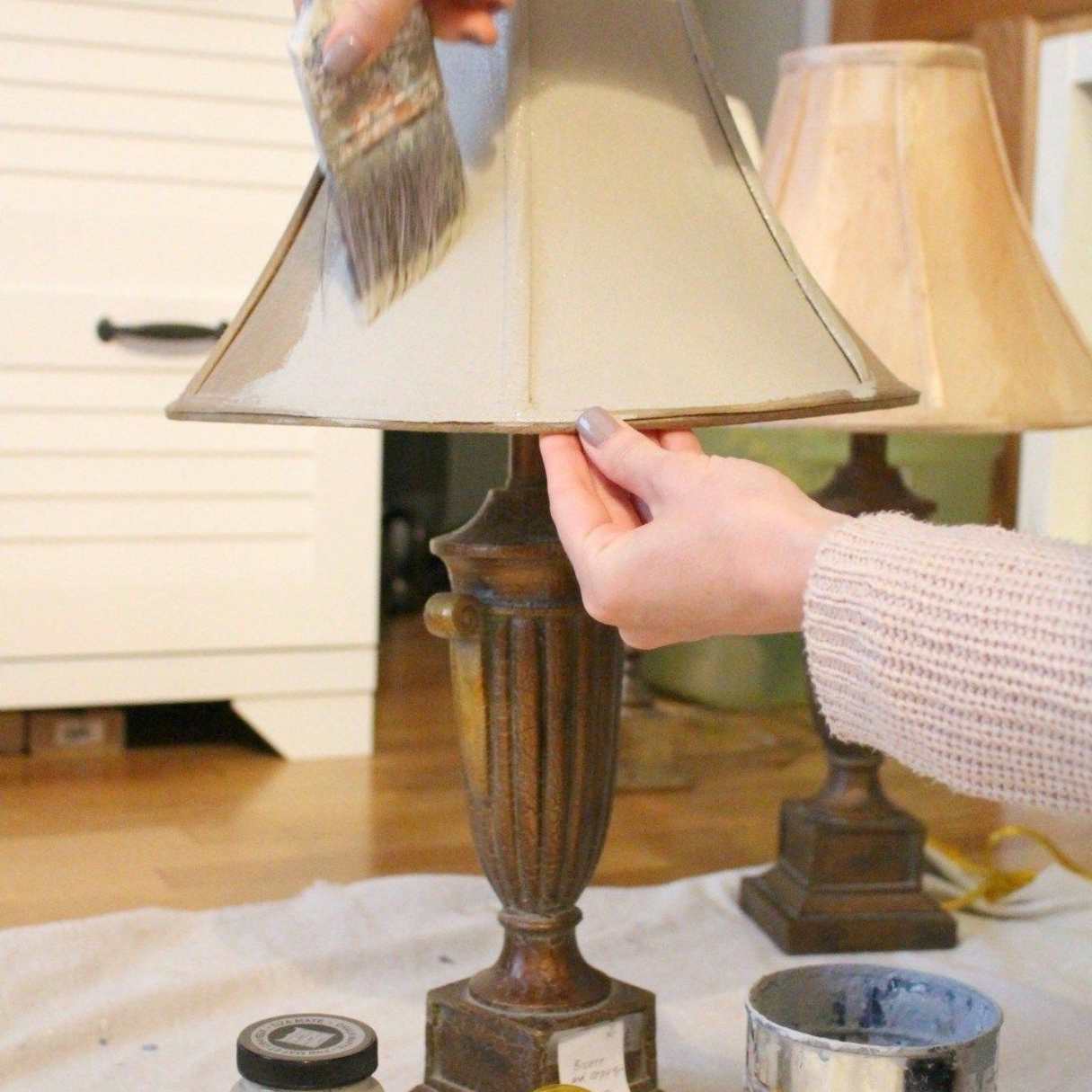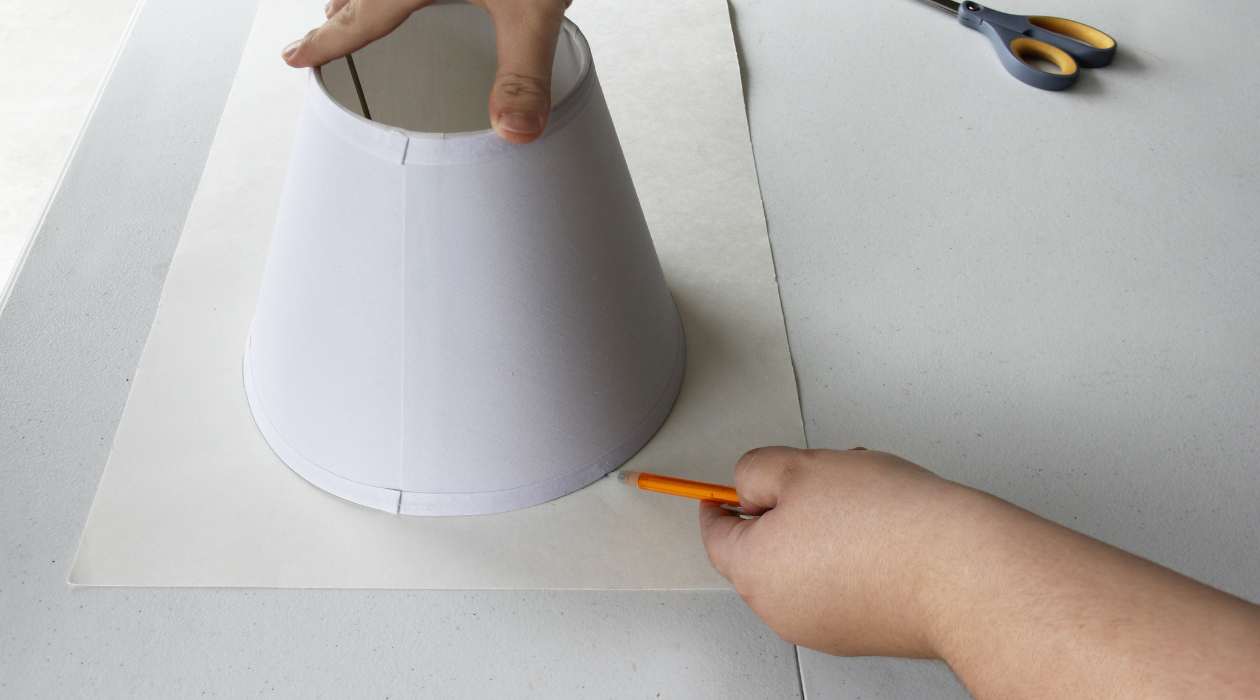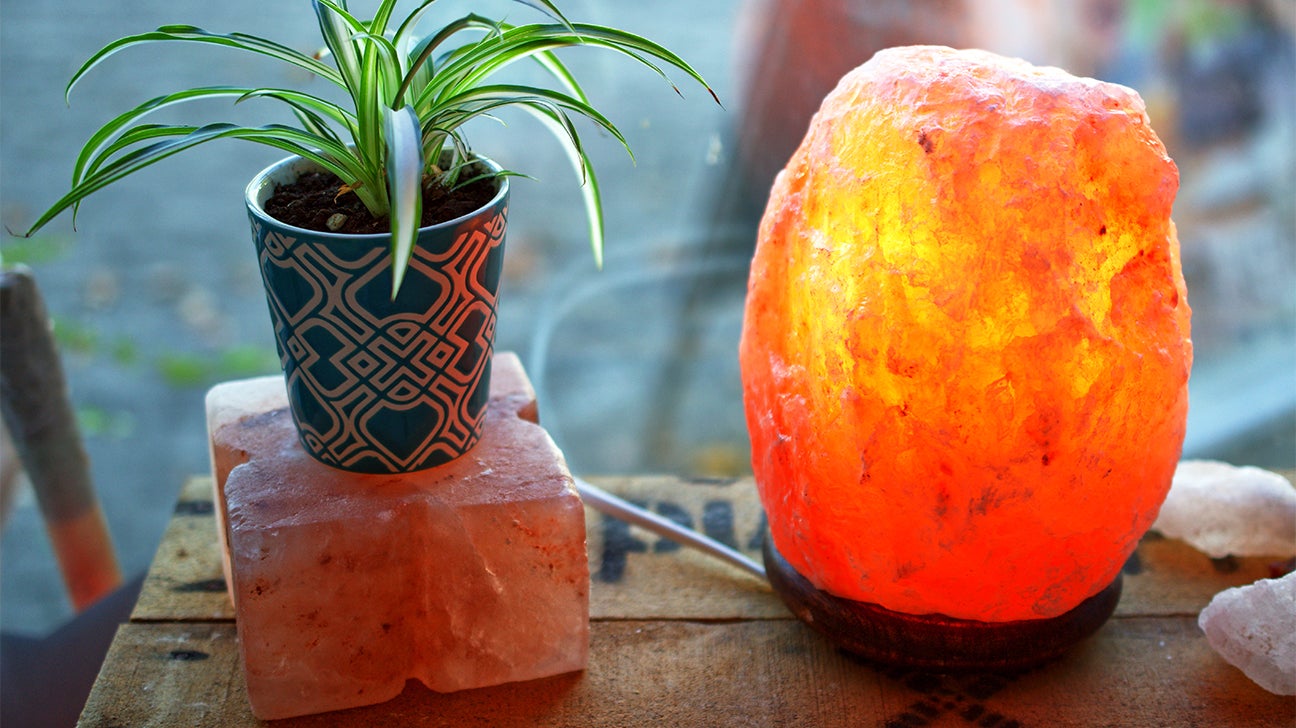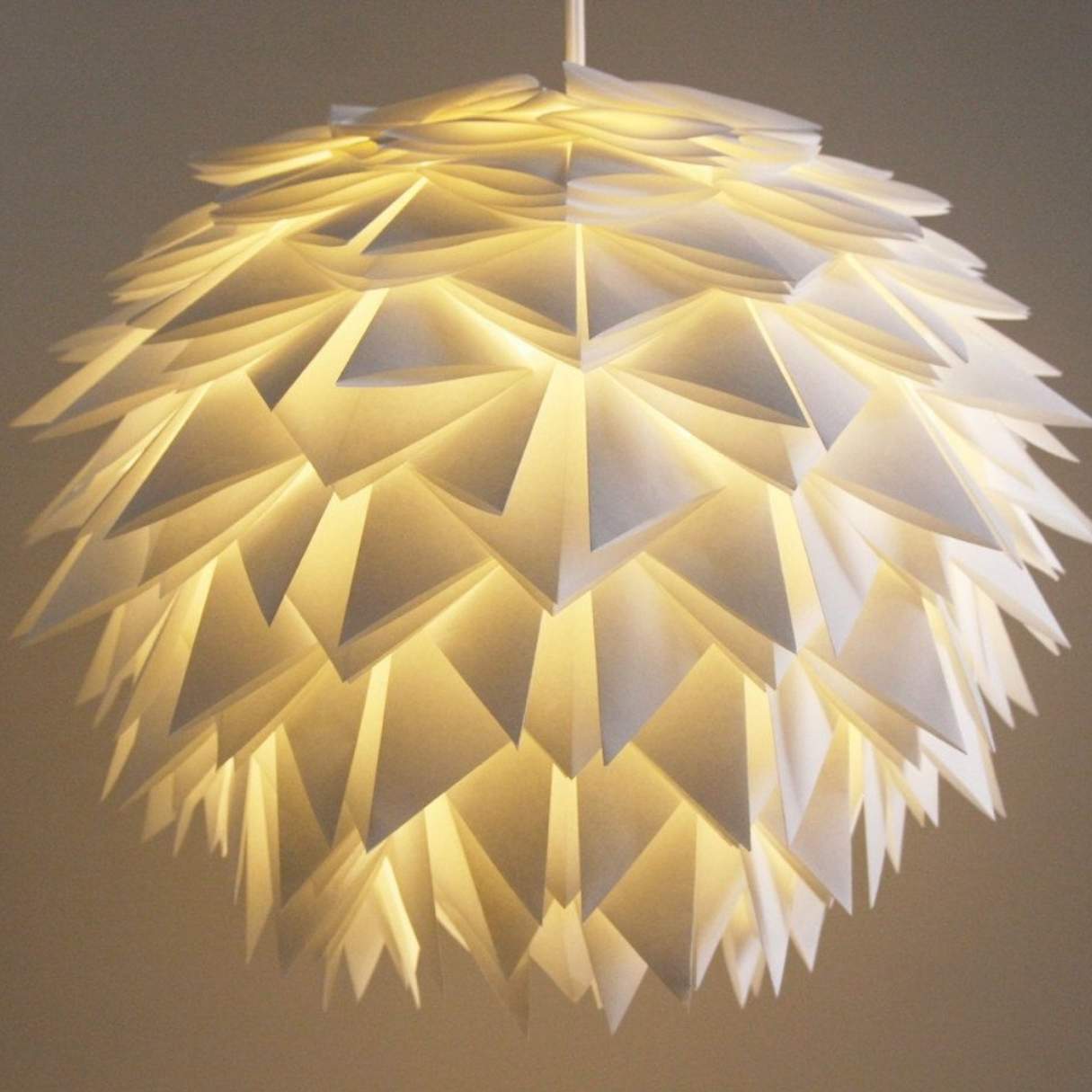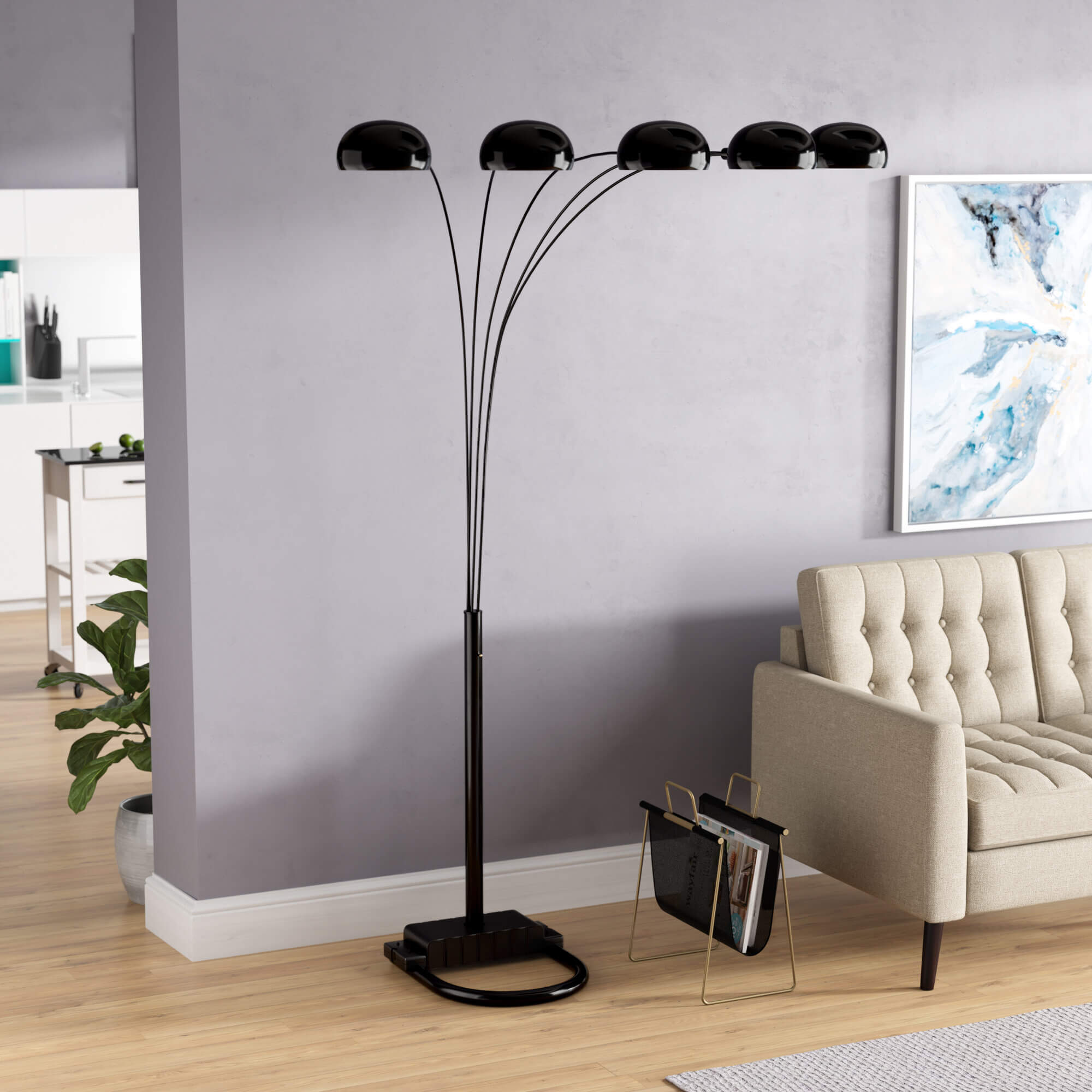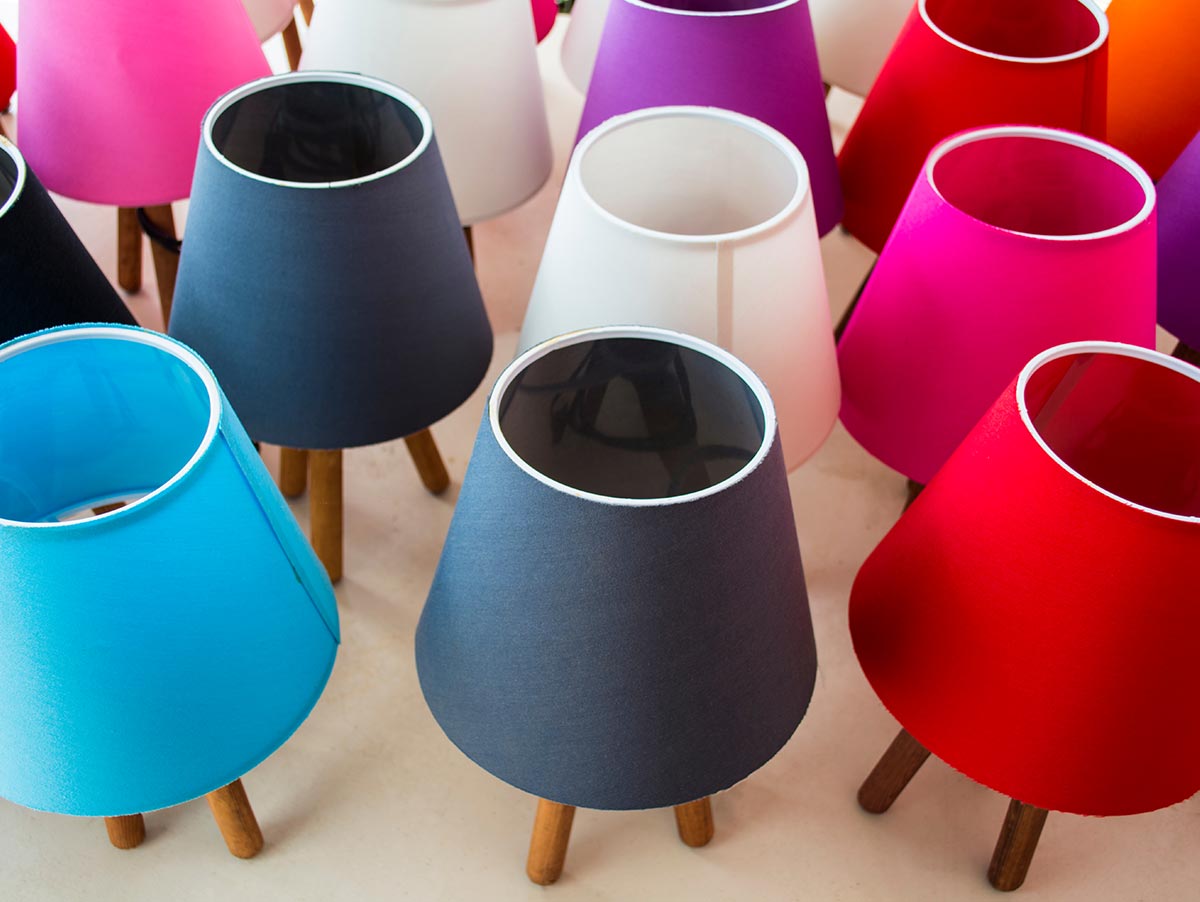

Furniture
How To Choose A Lamp Shade
Modified: March 6, 2024
Looking for the perfect lamp shade for your furniture? Discover our expert tips on how to choose a lamp shade that complements your style and enhances your home decor.
(Many of the links in this article redirect to a specific reviewed product. Your purchase of these products through affiliate links helps to generate commission for Storables.com, at no extra cost. Learn more)
Introduction
When it comes to decorating a room, one essential piece that often gets overlooked is the lamp shade. A lamp shade not only adds a touch of style to your space but also plays a crucial role in providing the right amount of illumination and creating a warm ambiance. Choosing the right lamp shade can enhance the overall aesthetic appeal of your room and tie together the different elements of your decor.
However, with countless options available in the market, selecting the perfect lamp shade can be a daunting task. Factors such as size, shape, material, color, and light diffusion all come into play when making this decision. To help you make an informed choice, we have compiled a comprehensive guide on how to choose the ideal lamp shade for your needs and preferences.
Before diving into the specifics, it’s important to consider the overall theme and style of your room. Are you going for a modern, minimalist look, or do you prefer something more traditional and ornate? Establishing the desired aesthetic will serve as a starting point and guide you through the selection process.
Now, let’s explore the key factors to consider when choosing a lamp shade.
Key Takeaways:
- Choose a lamp shade that matches the size and style of your lamp base and room. Consider factors like material, color, and light diffusion to create the perfect ambiance.
- Properly maintain and clean your lamp shade to keep it looking fresh and functional. Dust regularly, avoid moisture and direct sunlight, and handle with care to prolong its lifespan.
Read more: What Color Lamp Shade To Choose
Factors to Consider When Choosing a Lamp Shade
1. Size and Proportion:
The first factor to consider when selecting a lamp shade is the size and proportion. The shade should be in proportion with the lamp base and the surrounding furniture. A shade that is too small will look out of place, while a shade that is too large can overpower the lamp and disrupt the visual balance of the room. Consider the height and width of the lamp base to determine the appropriate size for the shade.
2. Shape and Style:
The shape and style of the lamp shade contribute to the overall aesthetic of the lamp. Choose a shape that complements the lamp base and the decor style of the room. For instance, a drum shade works well with modern and contemporary settings, while a traditional pleated shade suits more classic and formal interiors. Consider the angles and lines of the lamp base and the surrounding furniture when selecting the shape of the shade.
3. Material and Texture:
The material and texture of the lamp shade play a crucial role in determining its visual appeal and the quality of light it emits. Common materials for lamp shades include fabric, paper, glass, metal, and even natural materials such as rattan or woven fibers. Each material has its own unique characteristics and can create different lighting effects. Consider the room’s lighting needs and the overall decor style to choose the most suitable material and texture for the shade.
4. Color and Pattern:
The color and pattern of the lamp shade can significantly impact the ambiance of the room. Choose a color that complements the existing color scheme or adds a pop of accent color. Consider the level of transparency or opacity you desire, as this will affect the way the light is dispersed. Patterns, such as stripes, florals, or geometric designs, can add visual interest and personality to the lamp shade.
5. Light Diffusion:
Consider how you want the light to be diffused when selecting a lamp shade. Some shades are designed to diffuse light softly, creating a warm and cozy atmosphere. Others may have a more direct and focused light output. Additionally, consider whether you want the shade to provide a downward task light or a more upward ambient glow. The thickness of the material and the shape of the shade will affect the way light is dispersed.
Now that we’ve explored the key factors to consider when choosing a lamp shade, let’s move on to other important considerations to help you make the best decision for your space.
Size and Proportion
When choosing a lamp shade, one of the most important factors to consider is the size and proportion. The shade should be in harmony with the lamp base and the overall aesthetic of the room. Here are some tips to help you make the right choice:
1. Height: Consider the height of the lamp base and the intended placement of the lamp shade. The bottom of the lamp shade should cover the hardware and the socket of the lamp base without obscuring the bulb. As a general guideline, a lamp shade’s height should be approximately 40-60% of the height of the lamp base.
2. Width: The width of the lamp shade is equally important in achieving the right proportion. The shade should be wide enough to provide sufficient coverage and diffusion of light. A shade that is too narrow will restrict the light output, while a shade that is too wide may overwhelm the lamp base and the surrounding furniture. As a rule of thumb, the width of the shade should be roughly twice the width of the lamp base.
3. Proportion: Consider the overall size and scale of the room when selecting the size of the lamp shade. A larger room with higher ceilings can accommodate larger lamp shades, while smaller rooms might require more compact shades. Additionally, consider the size and style of other furniture and accessories in the room to ensure a cohesive and balanced look.
4. Lamp Base Compatibility: Keep in mind the compatibility of the lamp shade with the lamp base. Some lamp bases have specific fittings or harps that dictate the size and type of lamp shade that can be used. Make sure to measure the fitting or harp on the lamp base to ensure that the shade will attach securely and properly.
Remember, the size and proportion of the lamp shade should not only be visually appealing but also functional. It is important to strike a balance between style and practicality, ensuring that the shade provides adequate light while enhancing the overall aesthetic of the room.
By considering the height, width, proportion, and lamp base compatibility, you can confidently choose a lamp shade that fits perfectly and enhances the beauty of your space.
Shape and Style
The shape and style of a lamp shade play a significant role in the overall aesthetic of both the lamp and the room. The right shape and style can enhance the visual appeal and create a cohesive look. Here are some key considerations when choosing the shape and style of a lamp shade:
1. Drum: The drum shape is one of the most versatile and popular choices for lamp shades. It features straight sides and a flat, circular top and bottom. Drum shades work well in both traditional and modern settings and can provide a clean and contemporary look. They are particularly suitable for lamps with geometric or angular bases.
2. Empire: The empire shape is characterized by a narrow top that gradually widens toward the bottom. It has a classic and timeless appeal, making it suitable for traditional and formal spaces. Empire shades provide a soft and diffused light, creating a warm and inviting ambiance. They pair well with lamps that have curved or ornate bases.
3. Bell: The bell shape is reminiscent of traditional lamp shades and features a flared bottom and a narrow top. It adds an elegant and graceful touch to any lamp and room decor. Bell shades are suitable for both formal and casual spaces and can complement lamps with curved or embellished bases.
4. Square/Rectangular: Square or rectangular lamp shades offer a modern and contemporary look. They are ideal for lamps with straight lines and angular bases. These shapes can add a sense of geometric balance and symmetry to your room. They also work well in tight spaces where a round shade might be too bulky.
5. Oval: Oval lamp shades offer a unique and eye-catching alternative to traditional round shapes. They are great for adding visual interest and breaking the monotony of a room. Oval shades work well with lamps that have oval or rounded bases, creating a cohesive and harmonious look.
When selecting the shape and style of your lamp shade, consider the overall decor style of the room. Choose a shape that complements the lines and angles of the lamp base and other furniture pieces. Make sure the shade’s proportions are in harmony with the lamp base and the size of the room.
Additionally, consider the light diffusion capabilities of the shape. Some shapes, such as drum and empire shades, tend to diffuse light more evenly, while others, such as square or rectangular shades, provide more focused light in specific directions.
Remember, a well-chosen lamp shade shape and style can add character and visual interest to your space. It is an opportunity to express your personal style and create a cohesive and harmonious look in your room.
Material and Texture
The material and texture of a lamp shade not only contribute to its visual appeal but also affect the quality of light it emits. Choosing the right material and texture is crucial in creating the desired ambiance in your room. Here are some common lamp shade materials and textures to consider:
1. Fabric: Fabric lamp shades are a popular choice for their versatility and wide range of options. They can be made from various fabrics such as cotton, linen, silk, or polyester. Fabric shades can offer a soft and diffused light, creating a warm and cozy atmosphere. They come in different textures, from smooth and sleek to textured weaves, allowing you to add depth and visual interest to your lamp.
2. Paper: Paper lamp shades are lightweight and affordable options that can add a soft and warm glow to your room. They come in various styles and textures, such as pleated, rice paper, or parchment. Paper shades are often used in Asian-inspired or minimalist designs, as they create a serene and tranquil ambiance. It’s important to note that paper shades are more delicate and may require extra care and maintenance.
3. Glass: Glass lamp shades are elegant and timeless. They can come in different finishes, such as clear, frosted, or stained glass, allowing for various lighting effects. Glass shades provide a more direct and focused light, making them ideal for task lighting. They can add a touch of sophistication and classic charm to your room.
4. Metal: Metal lamp shades, such as those made from brass, copper, or iron, can add a sense of industrial or vintage style to your space. They offer a more contemporary and edgy look compared to other materials. Metal shades can create interesting light patterns and reflections, especially when combined with perforations or cutouts.
5. Natural Materials: Lamp shades made from natural materials such as rattan, bamboo, woven fibers, or wood can add a touch of organic and rustic charm to your room. These materials provide unique textures and patterns, adding depth and character to the shade. Natural material shades work well in bohemian, coastal, or tropical-inspired decors.
When choosing the material and texture of your lamp shade, consider the overall decor style of the room. Decide whether you want a shade that lets light pass through or one that provides more focused or diffused light. Also, consider the maintenance and cleaning requirements of each material to ensure longevity.
By carefully selecting the material and texture of your lamp shade, you can create the perfect lighting ambiance and enhance the overall aesthetic of your room.
Read more: How To Choose A Lamp
Color and Pattern
Color and pattern are essential factors to consider when choosing a lamp shade. They can greatly influence the overall look and feel of the room, as well as the type of lighting effect created. Here are some considerations to help you make the right choice:
1. Color Harmony: Consider the existing color scheme of your room when selecting a lamp shade. If you’re aiming for a cohesive and harmonious look, choose a shade color that complements or matches the dominant colors in the space. For instance, a neutral-colored shade will blend seamlessly in a room with a neutral palette, while a bold-colored shade can serve as a statement piece in a more muted room.
2. Accent Color: Lamp shades also provide an opportunity to introduce an accent color into the room. If you want to add a pop of color or create visual interest, opt for a shade in a bold or contrasting hue. This can create a focal point and draw attention to the lamp as a decorative element. Just ensure that the accent color complements the overall color scheme of the room.
3. Transparency and Opacity: Consider the level of transparency or opacity you desire in your lamp shade. Some shades are more sheer and allow light to pass through, creating a soft and diffused glow. Others are more opaque, directing the light downward for a more focused illumination. The level of transparency or opacity will affect the ambiance and lighting effect in the room.
4. Pattern and Texture: Lamp shades with patterns or textures can add visual interest and personality to your space. From stripes and florals to geometric designs and intricate motifs, there are endless pattern options to choose from. Consider the style and theme of your room, and choose a pattern that complements or enhances the overall aesthetic. Mix patterns sparingly to avoid overwhelming the space.
5. Individual Style: Don’t be afraid to let your individual style shine through when selecting a lamp shade. If you have eclectic or bohemian tastes, embrace bold patterns and vibrant colors. If you prefer a more minimalist or contemporary look, opt for understated shades in neutral tones. Remember, your lamp shade is an opportunity to infuse your own personality and style into the room.
Keep in mind that lighting conditions can also influence the perception of color. Consider the type of bulb you plan to use and its color temperature (warm, cool, or neutral) to ensure it complements the shade color and creates the desired ambiance in your room.
By carefully considering the color, pattern, and texture of your lamp shade, you can enhance the overall aesthetic of your space and create a visually pleasing and cohesive look.
When choosing a lamp shade, consider the size and shape of your lamp base. A larger base needs a larger shade, and a round base looks best with a round shade. Also, think about the style and color of the shade to match your decor.
Light Diffusion
Light diffusion is an important aspect to consider when choosing a lamp shade. It determines how the light is dispersed and the type of ambiance created in your space. Here are some factors to consider regarding light diffusion:
1. Soft Diffusion: If you prefer a soft and cozy atmosphere, choose a lamp shade that provides a diffused light. Fabric or paper shades are excellent options for this purpose. They allow light to pass through the material, creating a warm and gentle illumination. The light is softened, reducing harsh shadows and creating a comfortable and inviting ambiance.
2. Focused Light: Some lamp shades are designed to direct light in a specific direction, providing a more focused illumination. This type of shade is ideal for task lighting, such as reading or working at a desk. Shades with a narrower opening or a more downward-facing design can help concentrate the light, making it easier to perform specific tasks.
3. Upward Ambient Glow: If you want to create a warm and ambient glow in your space, consider shades with an upward-facing design. These shades direct the light towards the ceiling, allowing it to bounce off and spread throughout the room. This technique creates a soft and indirect lighting effect, adding a subtle and relaxing ambiance.
4. Light Penetration: Consider the opacity of the shade material when considering light diffusion. Transparent or semi-transparent materials allow more light to pass through, creating a brighter and more vibrant illumination. On the other hand, opaque or denser materials restrict some of the light, creating a more subdued and atmospheric lighting effect.
5. Multiple Light Sources: If you have multiple lamps or light fixtures in a room, consider how the light diffusion of each shade will work together. Ensure that the overall effect is balanced and cohesive. For example, you may want a combination of diffused light from some shades and more focused light from others to create a layered and dynamic lighting scheme.
When selecting a lamp shade, consider the type of atmosphere you want to create in your space. Decide whether you desire a soft and cozy glow, a focused light for specific tasks, or an overall ambient illumination. Understanding how different shades affect light diffusion will help you achieve the desired lighting effect in your room.
Remember, the right light diffusion can enhance the mood and functionality of your space, ensuring that your lamp shade serves both practical and aesthetic purposes.
Lamp Base Compatibility
When choosing a lamp shade, it is crucial to consider the compatibility with the lamp base. The right combination of shade and base not only creates a visually appealing look but also ensures proper functionality. Here are some important factors to consider regarding lamp base compatibility:
1. Fitting or Harp: Lamp shades are typically attached to the lamp base using a fitting or harp. The fitting is a metal frame with a ring that secures the shade to the base, while the harp is a metal wire bracket that holds the shade in place. Check the fitting or harp size on your lamp base to ensure that the shade you choose will attach securely and properly.
2. Size: Consider the size of the lamp base when selecting a shade. A small base may look overwhelmed by a large shade, while a large base may appear disproportionate with a small shade. The general guideline is that the bottom diameter of the shade should be wider than the widest part of the lamp base. This will create a balanced and proportional look.
3. Style and Aesthetic: The lamp base and shade should complement each other in terms of style and aesthetic. Consider the design elements, materials, and colors of the lamp base and choose a shade that enhances its features. A well-matched combination will create a cohesive and stylish look in your space.
4. Height: The height of the lamp base should also be taken into account when choosing a shade. If the base is tall, consider a taller shade to maintain proportion. Similarly, a shorter base may require a shorter shade. The bottom of the shade should cover the hardware and the socket of the lamp base without obscuring the bulb.
5. Swapping Shades: If you already have a lamp base and are looking to update the shade, make sure to measure the existing shade’s fitting or harp size. This will help you find a new shade that will fit the base correctly. Additionally, consider the overall style and size of the lamp base to ensure a cohesive look when swapping shades.
By considering lamp base compatibility, you can ensure a seamless and functional combination of the base and shade. This will result in a visually pleasing and cohesive look for your lamp, enhancing the overall aesthetic of your space.
Budget Considerations
When choosing a lamp shade, it’s important to consider your budget. Lamp shades come in a wide range of prices, so it’s essential to find one that fits your budget while still meeting your style and quality requirements. Here are some budget considerations to keep in mind:
1. Material and Brand: The choice of material and brand can greatly affect the cost of a lamp shade. High-end designer brands or shades made from luxurious materials like silk or hand-blown glass tend to be more expensive. On the other hand, shades made from more affordable materials like fabric or paper can be budget-friendly options without compromising on quality and style.
2. Size and Complexity: Generally, larger or more intricate lamp shades tend to be pricier than smaller, simpler ones. The size and complexity of the shade can impact the amount of material required and the craftsmanship involved. Consider the size of your lamp base and the space where it will be placed to ensure that the shade fits within your budget constraints.
3. Customization: Some lamp shades offer customization options, allowing you to choose specific materials, colors, or patterns. While customization can add a personal touch and ensure a perfect match for your space, it often comes at an additional cost. Determine whether customization is essential for your needs or if you can find a ready-made shade that meets your requirements within your budget.
4. Value for Money: While it’s important to consider your budget, also keep in mind the value for money. A higher-priced lamp shade might be worth the investment if it offers better quality craftsmanship or uses superior materials. It may also have a longer lifespan, saving you money in the long run by not needing frequent replacement.
5. Sales and Discounts: Be on the lookout for sales and discounts, both in physical stores and online retailers. Many vendors offer periodic promotions or clearance sales where you can find quality lamp shades at discounted prices. Additionally, consider purchasing during holiday seasons or end-of-season sales when retailers often offer discounted prices on home decor items.
By considering your budget and exploring different options, you can find a lamp shade that offers the right balance of style, quality, and affordability. Remember, while it’s important to stay within your budget, prioritizing quality and aesthetics will ensure that your lamp shade brings long-lasting value and enhances the overall look of your space.
Read more: How To Put A Lamp Shade On
Maintenance and Cleaning Tips
Proper maintenance and regular cleaning are essential to keep your lamp shade looking its best and prolong its lifespan. Here are some tips to help you effectively maintain and clean your lamp shade:
1. Dusting: Dust your lamp shade regularly to prevent build-up. Use a soft, dry cloth or a feather duster to gently remove any surface dust. Avoid using abrasive materials or harsh chemicals as they can damage the fabric or finish of the shade.
2. Vacuuming: For fabric lamp shades or those with intricate designs, vacuuming can be an effective way to remove dust and debris. Use a soft brush attachment or a handheld vacuum and carefully run it along the surface of the shade, paying attention to any crevices or details.
3. Spot Cleaning: For small stains or spots on fabric lamp shades, spot cleaning can be done using mild detergent and warm water. Dilute a small amount of mild detergent in water and use a clean cloth or sponge to gently dab the stained area. Be careful not to oversaturate the fabric and always test the cleaning solution on a small, inconspicuous area of the shade first to ensure colorfastness.
4. Dry Cleaning: If your lamp shade requires a deeper cleaning or is made of delicate or intricate materials, consider taking it to a professional dry cleaner who specializes in lamp shade cleaning. They will have the expertise and specialized cleaning methods to safely clean and restore the shade without risk of damage.
5. Avoid Moisture: Lamp shades, especially those made from paper or delicate fabrics, should be kept away from excessive moisture or humidity. Moisture can cause the materials to warp, stain, or mold. Avoid placing the lamp in areas prone to moisture, such as near open windows or in bathrooms.
6. Protect from Direct Sunlight: Prolonged exposure to direct sunlight can cause fading and discoloration of the lamp shade material. Consider rotating the lamp periodically or using window coverings to protect the shade from harsh sunlight. This will help maintain its original color and appearance.
7. Handle with Care: When handling or moving your lamp shade, always do so with care. Support the shade from the bottom or around the edges to avoid putting pressure on the fabric or material. This will prevent bending, tearing, or deforming of the shade.
By following these maintenance and cleaning tips, you can keep your lamp shade looking clean, fresh, and in good condition for years to come. Regular care will not only enhance its appearance but also ensure optimal illumination and a longer lifespan.
Conclusion
Choosing the right lamp shade is an important decision when it comes to enhancing the overall aesthetic and functionality of your space. Considering factors such as size and proportion, shape and style, material and texture, color and pattern, light diffusion, lamp base compatibility, budget, and maintenance will help you make an informed choice that meets your needs and preferences.
Remember to consider the size and proportion of the shade relative to the lamp base and the room. The shape and style should complement the lamp base and the overall decor style of the room. The material and texture of the shade can add visual interest and affect the light diffusion, so choose one that aligns with your aesthetic preferences.
Color and pattern play a crucial role in creating the desired ambiance and adding personality to your space. Consider your room’s color scheme and the level of transparency or opacity you desire in the shade. Customizing the color and pattern can help you achieve a unique and personalized look.
Light diffusion determines how the shade disperses light, so consider whether you want a soft, diffused glow, a focused task light, or an upward ambient glow. Compatibility between the lamp base and shade is important for secure attachment and a visually pleasing result. Keep your budget in mind and look for options that offer value for money.
Proper maintenance and cleaning will ensure that your lamp shade retains its beauty and functionality over time. Regular dusting, spot cleaning, and avoiding moisture and direct sunlight will help prolong its lifespan.
In conclusion, choosing the right lamp shade involves a careful consideration of various factors. By taking the time to evaluate your needs and preferences, you can find a shade that not only enhances the overall aesthetic of your space but also creates the desired lighting atmosphere. A well-chosen lamp shade will provide both functionality and visual appeal, making it a valuable addition to your home decor.
Frequently Asked Questions about How To Choose A Lamp Shade
Was this page helpful?
At Storables.com, we guarantee accurate and reliable information. Our content, validated by Expert Board Contributors, is crafted following stringent Editorial Policies. We're committed to providing you with well-researched, expert-backed insights for all your informational needs.
